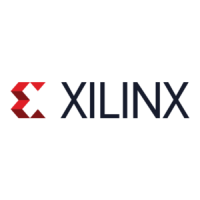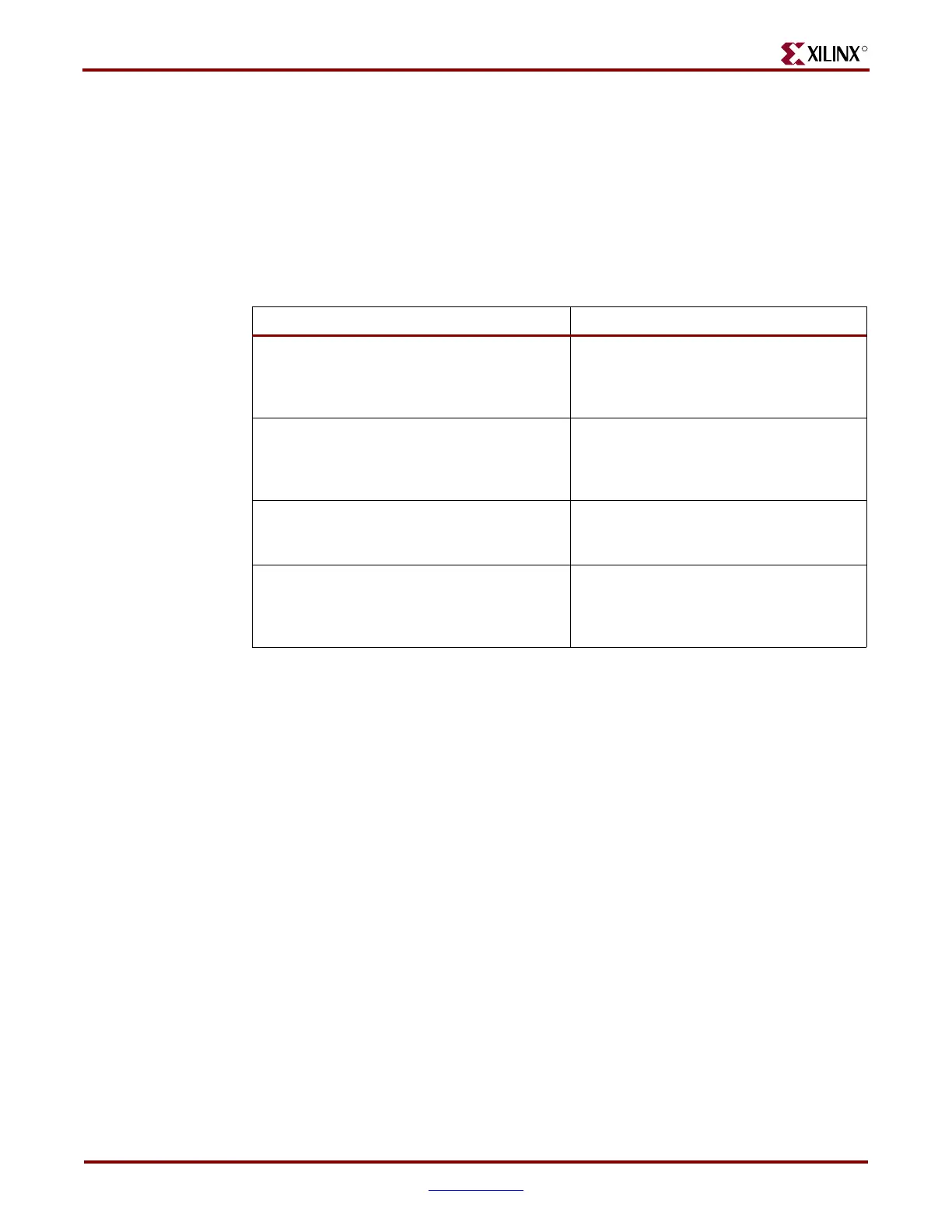98 www.xilinx.com Virtex-5 RocketIO GTP Transceiver User Guide
UG196 (v1.3) May 25, 2007
Chapter 6: GTP Transmitter (TX)
R
Configurable 8B/10B Encoder
Overview
Many protocols use 8B/10B encoding on outgoing data. 8B/10B is an industry-standard
encoding scheme that trades two bits of overhead per byte for improved performance.
Table 6-3 outlines the benefits and costs of 8B/10B. Appendix C shows how 8-bit values
are mapped to 10-bit data and control sequences in 8B/10B.
The GTP transceiver includes an 8B/10B encoder to encode TX data without consuming
FPGA resources. If encoding is not needed, the block can be disabled to minimize latency.
Table 6-3: 8B/10B Trade-Offs
8B/10B Benefits 8B/10B Costs
• DC Balanced: No increase in bit errors due
to line charging on AC-coupled channels.
• Two-bit overhead per byte: Every byte
transmitted is mapped to a 10-bit
character. As a result, 20% of the channel
bandwidth is consumed for overhead.
• Limited Run Lengths: The maximum
number of bits without a transition is 5,
making it easy for receivers to achieve and
maintain lock.
• Both sides of the channel must use
8B/10B: 8B/10B data must be decoded
before it can be used.
• Error Detection: All single-bit errors and
many multibit errors can be detected using
disparity and out of table error checking.
• Control Characters: 8B/10B allows bytes to
be marked as control characters. This
feature is heavily used in many standard
protocols.

